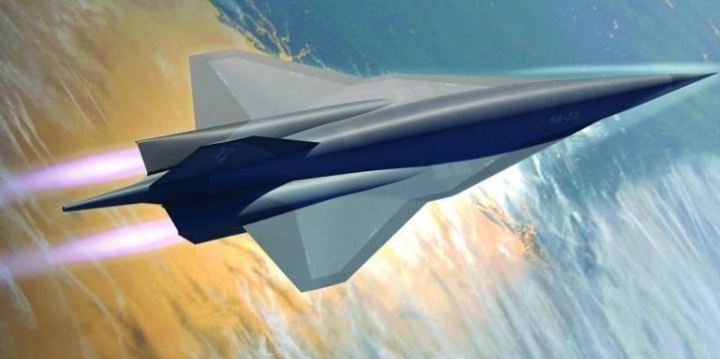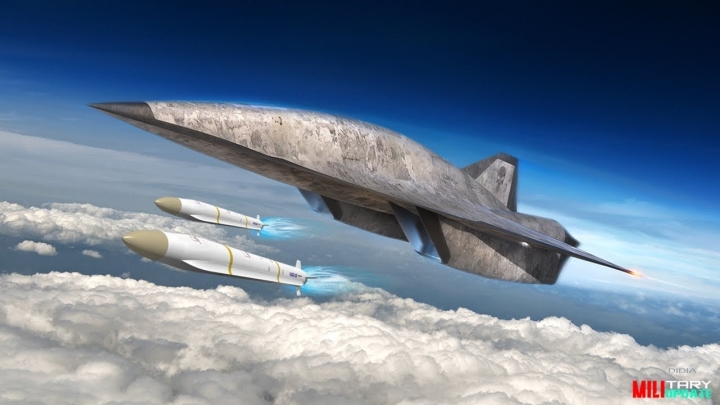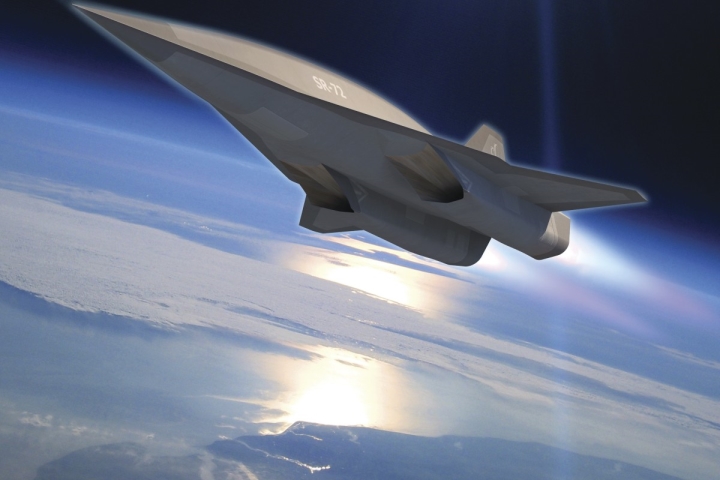In 2013, Lockheed Martin first announced the development of the promising SR-72 aircraft, capable of reaching supersonic speeds. The above news has attracted the attention of experts and customers interested in aviation.

The appearance of the SR-72
Initial information about the possibility of Lockheed Martin developing a new aircraft, with characteristics not inferior to the strategic reconnaissance aircraft SR-71 has been circulating for decades. So, in the mid-2000s, the press reported on a new Lockheed Martin plane that could fly 5-6 times the speed of sound. However, all these rumors are unconfirmed.
The first official information about the SR-72 project was first published by Aviation Week & Space Technology magazine in November 2013. During the previous few years, Lockheed Martin and related organizations carried out various studies and created the scientific and technical basis for the next generation of aircraft designs. Then, experts said, the new aircraft model could be built as early as 2018.
Soon after, the Pentagon showed great interest in the development of hypersonic weapons. Models of this class will give the US Air Force an edge over its enemies in the distant future. However, the SR-72 project was not discussed with the US Air Force. In addition, being investigated during a period of gradual reduction in military spending has affected the future of the project.
At the end of 2014, a new agreement between Lockheed Martin and NASA conducted research on the hypersonic propulsion system. These studies were successful. In early 2016, Lockheed-Martin announced a technological breakthrough, allowing the development of hypersonic weapons.
Some exciting news arrived in early 2018. Lockheed Martin officially announced several new technologies that will ensure the creation of an SR-72 aircraft. Then, Lockheed Martin said the prototype plane would be built and would fly by 2025. It would become the flagship fighter, carrying hypersonic missile weapons.
Special technology of SR-72
The official image of the SR-72 aircraft shows that this is a specially designed aircraft, with microchips with the lower fuselage and along the wing surface. The plane has a long-beam delta wing and two nanotechnology-engineered engines.
Such materials do not allow to determine the mass and important features of the fighter. In particular, it is not clear whether the SR-72 has a cockpit or not. This could also be a type of heavy supersonic UAV under development.

According to Lockheed Martin, the new aircraft can reach speeds of at least 5-6M. This places special requirements on the design and materials of the airframe. According to various estimates, an aircraft like the one above will have a composite structure of heat-resistant alloys and composites. Also need additional means of cooling, e.g. by circulating fuel such as SR-71.
In addition, a new type of engine was developed, with the participation of the company Aerojet Rocketdyne. So in 2018, Lockheed Martin talked about creating engine parts using 3D printing technology.
The US Air Force and Lockheed Martin do not currently have much in common in creating high-performance reconnaissance aircraft. Therefore, the SR-72 project has the ability, unlike its predecessor SR-71, to carry different equipment and weapons, serving the purpose of rapid attack.
Long Range Attack Mission
Immediately after the launch of the SR-72 project, representatives of the US Air Force spoke about their interest in the topic of hypersonic weapons. High-performance fighters can be useful for aerial combat. However, it remains unclear what mission the new Lockheed-Martin development can effectively capture.
Obviously, the US Air Force will not order supersonic reconnaissance aircraft. Image reconnaissance tasks have long been assigned to satellites and UAVs. Therefore, the proposal of a supersonic aircraft, carrying hypersonic missiles would seem more reasonable.

Such an attack complex will be able to solve particularly complex tasks and will increase the capacity of long-range attacks. First of all, it will greatly reduce the time it takes to attack the specified target. In addition, it also increases the ability to successfully break through the enemy’s air defense and missile defense systems.
Despite the interest in hypersonic weapons, the US Air Force is in no hurry to develop more SR-72 aircraft. Long-range aviation in the near future will develop through the construction and modernization of the types of aircraft that the United States owns today. Specifically, the B-21 aircraft project. The project to build the SR-72 could also be affected by the high cost factor.
Project outlook
To date, Lockheed Martin and related organizations have carried out extensive research and development work, and gained the experience and technology to fully develop the SR-72 in the future. Reports from previous years suggest that its design has already begun and the first flight of the prototype will take place in the middle of this decade.
However, the real prospect of an SR-72 project remains in question. Potential customers only talk about interest, but will not be in a hurry to sign a contract and place an order in the near future.

In addition, the characteristics of the SR-72 aircraft do not correspond to current Pentagon plans. The US Air Force will not be ready to take the risk and participate in this too bold project.
However, the situation may change in the coming years. By 2025, test flights will be conducted. Based on test results and potential customers’ needs, a final decision will be made.
If Lockheed Martin and associates can really solve all the technical and technological challenges, the SR-72 project will receive support and possibly go beyond test flights.





